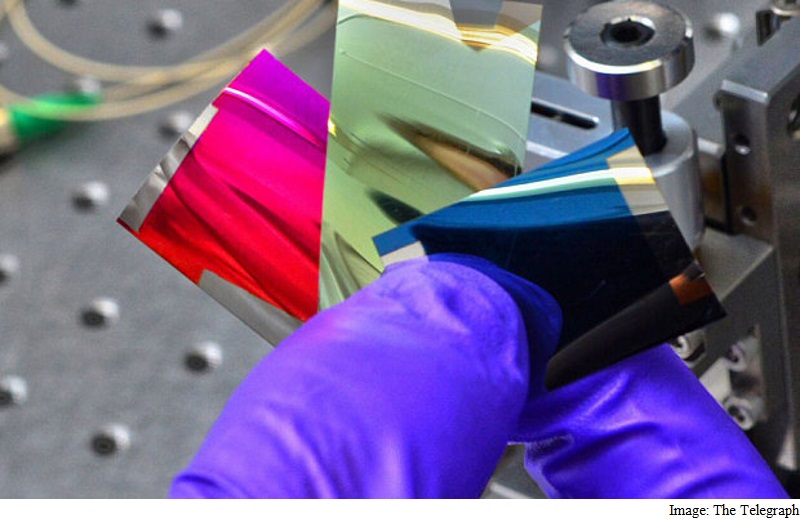- Home
- Science
- Science News
- New Low Power Touchscreen Could End Daily Smartphone Charging Woes
New Low-Power Touchscreen Could End Daily Smartphone Charging Woes

The team is already in talks with some big players in consumer electronics to see if their new material can replace current LCD touchscreens over the next few years, sciencealert.com reported.
Developed by Bodie Technologies, a University of Oxford spin-off company, the new technology could spare the consumers the pains of charging their smartphones daily.
"We can create an entire new market. You have to charge smartwatches every night, which is slowing adoption. But if you had a smartwatch or smart glass that didn't need much power, you could recharge it just once a week," one of the researchers, Peiman Hosseini, was quoted as saying by The Telegraph.
Last year, the researchers published a paper describing how a rigid or flexible display can be formed from microscopic 'stacks' of a material called GST and electrode layers.
Each stack is made of a single 7-nanometre-thick layer of GST inserted between two layers of a transparent electrode. This stack is fed a very low-energy electric current to produce colour images.
The researchers claimed that their ultra-thin display material can produce vivid colour displays at very high resolution, even in bright, direct sunlight.
"This makes them potentially useful for 'smart' glasses, foldable screens, windshield displays, and even synthetic retinas that mimic the abilities of photoreceptor cells in the human eye," the team was quoted as saying.
Catch the latest from the Consumer Electronics Show on Gadgets 360, at our CES 2026 hub.
Related Stories
- Samsung Galaxy Unpacked 2025
- ChatGPT
- Redmi Note 14 Pro+
- iPhone 16
- Apple Vision Pro
- Oneplus 12
- OnePlus Nord CE 3 Lite 5G
- iPhone 13
- Xiaomi 14 Pro
- Oppo Find N3
- Tecno Spark Go (2023)
- Realme V30
- Best Phones Under 25000
- Samsung Galaxy S24 Series
- Cryptocurrency
- iQoo 12
- Samsung Galaxy S24 Ultra
- Giottus
- Samsung Galaxy Z Flip 5
- Apple 'Scary Fast'
- Housefull 5
- GoPro Hero 12 Black Review
- Invincible Season 2
- JioGlass
- HD Ready TV
- Laptop Under 50000
- Smartwatch Under 10000
- Latest Mobile Phones
- Compare Phones
- Honor Win RT
- Honor Win
- Xiaomi 17 Ultra Leica Edition
- Xiaomi 17 Ultra
- Huawei Nova 15
- Huawei Nova 15 Pro
- Huawei Nova 15 Ultra
- OnePlus 15R
- Asus ProArt P16
- MacBook Pro 14-inch (M5, 2025)
- OPPO Pad Air 5
- Huawei MatePad 11.5 (2026)
- Xiaomi Watch 5
- Huawei Watch 10th Anniversary Edition
- Acerpure Nitro Z Series 100-inch QLED TV
- Samsung 43 Inch LED Ultra HD (4K) Smart TV (UA43UE81AFULXL)
- Asus ROG Ally
- Nintendo Switch Lite
- Haier 1.6 Ton 5 Star Inverter Split AC (HSU19G-MZAID5BN-INV)
- Haier 1.6 Ton 5 Star Inverter Split AC (HSU19G-MZAIM5BN-INV)

















